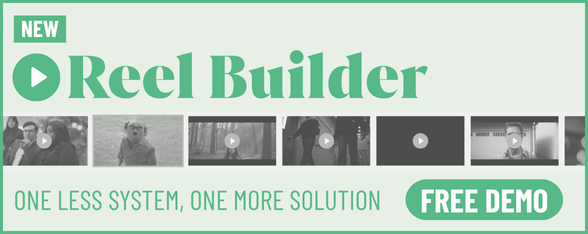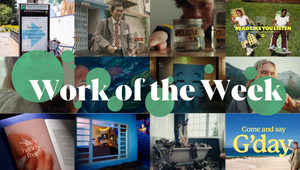
Subtle, Striking and Impactful: The Key to a Great Colour Grading

Introducing Charles-Etienne a.k.a Chuck, a senior colour artist and associate at Arketype.
With an instinctive approach, Chuck brings a unique touch to both high-end commercials and moody, unconventional music videos. He lets the raw image lead him, creating final grades that not only remain true to the story but also elevate it.
His passion for photography deeply influences his work, drawing on real-world experience in capturing and printing images to enhance light, shadow, and the visual narrative in every project he undertakes.
LBB> What was your first experience with the world of colour grading – and when did you decide that being a colourist was a role that you wanted to pursue?
Chuck> Cliché to how many people start out in the industry, I wanted to be a director – but photography was something I was inherently really passionate about. My favourite part of shooting stills was experimenting with colour and light in Photoshop after a shoot. That post-process stage was a crucial part of bringing my creative vision to life.
Naturally, I wanted to have this same look on my short films. I installed After Effects and managed to pull off my signature look on motion, and quickly realised I had a knack for this.
I started devouring every book I could get my hands on and that’s when I knew I had found the one thing I wanted to do everyday.
LBB> In your opinion, what's the difference between a good grade and a great grade?
Chuck> A great grade enhances visual storytelling. It elevates the aesthetics, conveys the intended emotion, while maintaining the balance of being subtle, striking, and impactful.
It should remain constant and accurate throughout the project, keeping the viewer from noticing the magic behind the curtains or taking away from the narrative.
A strong grade also respects the work of the art and cinematography departments, complimenting the creative choices established on set and in preproduction.
Colour grading is a finishing process and in my opinion it shouldn’t be used to lay the foundations. When done right, it can elevate and push a project far beyond its limitations, making the smallest budgets look like a million bucks.
LBB> How/where did you hone your craft and did you have any particular mentors?
Chuck> Back in the late 2000s, grading was skill for a selected few / uncharted territory, especially in Montreal. Mentors were scarce; so I did what I could, grading my own projects, learning through trial and error, chasing the elusive professional allure I couldn’t afford at the time.
I got my lucky break while working as a production assistant on a fairly big commercial set. I had the lacklustre task of blocking off streets, but I brought my camera anyway and convinced the producer to let me shoot some behind-the-scene stills. A few days later I got a call from the producer:
“The director loves the colours in your photos, and wants the same look on the actual commercial. Can you colour grade?”
“Of course!”
Little did I know that it left me three days to learn a new software and that a professional colour grading session was typically attended in person by the director, the DP and the agency. It should’ve been a trainwreck, but somehow it worked. And it worked well enough … because I am still here!
LBB> Tell us more about your creative process
Chuck> Colour grading has always been a deeply personal and intuitive process for me. Even with today’s nearly infinite tools to drastically transform images, I’d prefer to let the shot and my instinct guide me. Every scene, every commercial evokes a certain emotion and this feeling will naturally translate and shape a colour palette and an overall mood. Of course, filmmaking at its core is collaborative, and I always take the personal preferences and taste of my clients into account. References are especially helpful when working with new teams - they give us a shared language, but at some point I believe it’s important to let them go.
Like with everything in life, I try to approach grading with an open mind. Time is always running out, especially on commercials, but my proudest grades are often those that I have been challenged to get out of my comfort zone and start over. Sometimes it looks completely wrong at the beginning, but it sparks an idea that will lead to something totally unexpected and original. As colourists, we are lucky to never have the blank page syndrome. We always have someone’s sketch to build on. Our job is to bring it to life and push it to its full potential.
LBB> Colour grading is largely a digital affair, but there’s also been a resurgence of film over the past few years in commercials and music videos. What are your thoughts about working on film versus digital formats like 4K? And what are your favourite techniques for capturing a vintage or tactile feel?
Chuck> I was fortunate enough to learn the craft of shooting and editing on film at Concordia University before digital became the norm. There was something almost sacred about those long nights, physically handling the film, cutting and taping by hand. It made you slow down. Spending endless nights on the Steenbeck editing table taught me to respect the medium and every frame, so naturally I get excited when a project is shot on film! It’s hard to pick between the two mediums because I truly love them both.
As a bit of a control freak, I really enjoy digital for the flexibility of it and nowadays even a purist can’t tell if it’s film or not when it’s done right. But I’ll admit: when it's shot on film (well)… there’s an explainable magic about it.
LBB> How do you ensure that each colourist-director partnership is a success?
Chuck> To no surprise, since the pandemic, our industry changed drastically. It's not unusual that during colour grading sessions directors have to take several virtual meetings for other ongoing projects. Having less time to focus on colour means directors want to work with colourists that have a certain autonomy, can carry their vision and also defend their craft. Most directors want more than somebody that pushes buttons, they want a colourist that can take the project and run with it by bringing new ideas.
Partnerships are also built by supporting directors on their personal projects. It’s always a gamble when taking on a pro bono short film or music video… but most of the time it will cement trust between the director and the colourist, making collaboration easier on commercials.
There are plenty of good colourists out there, so having a nice and unique ambiance is very important. Making sure your director is comfy, having good music on and being nice can be what will set you apart and ensure a lasting partnership!
LBB> What advice would you give to budding colourist?
Chuck> Becoming a professional colourist is rarely a straight line. Having as many different skills as you can like photography, video editing, and compositing can bring you closer to the colourist chair. It’s easy (and dangerous) to fall down the technical rabbit hole with colour spaces, calibration, complex node trees, etc. Technical stuff is important to know and master, but it’s definitely not what will distinguish you from the rest.
Focus on learning your craft, developing your style and meeting as many creative people as you can. This job isn’t just about sitting in front of a screen - it’s about collaboration.
You’ll spend a lot of time in a room with clients, directors, and DPs. Being easy to work with goes a long way.
Keep learning. Stay curious. And don’t be afraid to take the long way around.















